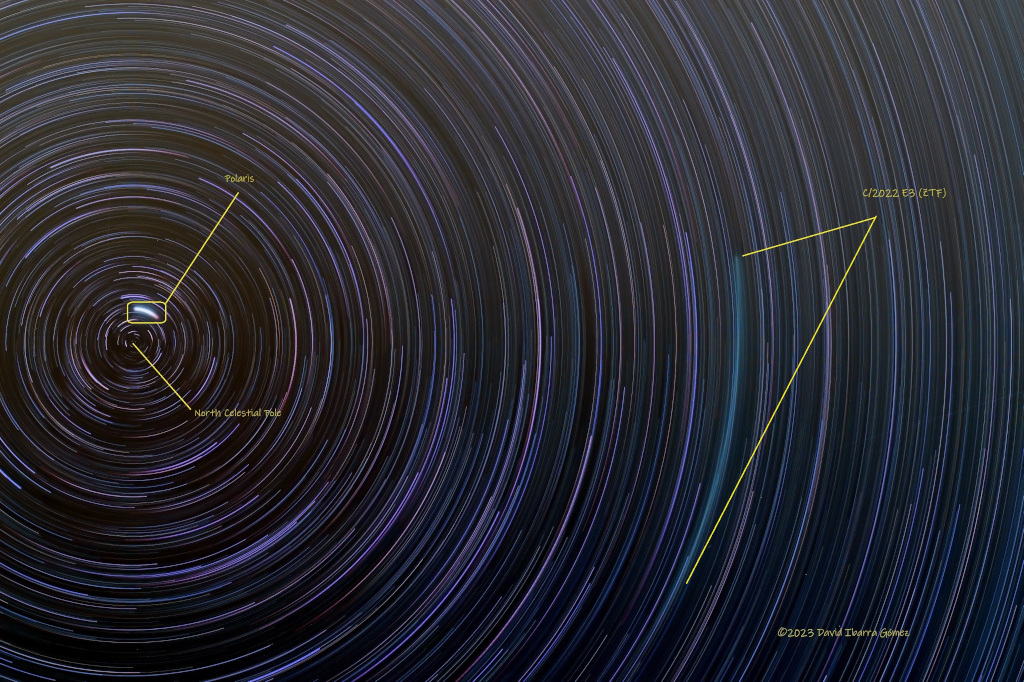2023年2月3日
Polaris and the Trail of Comet ZTF
Image Credit & Copyright: David Ibarra Gomez
Explanation: Stars trace concentric arcs around the North Celestial Pole in this three hour long night sky composite, recorded with a digital camera fixed to a tripod on January 31, near Àger, Lleida, Spain. On that date Comet C/2022 E3 (ZTF) was near its northernmost declination in planet Earth’s sky. That put the comet about 10 degrees from Earth’s North Celestial Pole making the comet’s position circumpolar, always above the horizon, from all locations on planet Earth at more than 10 degrees northern latitude. In the startrail image, the extension of Earth’s axis of rotation into space is at the left. North star Polaris traces the short, bright, concentric arc less than a degree from the North Celestial Pole. The trail of Comet ZTF is indicated at the right, its apparent motion mostly reflecting Earth’s rotation like the stars. But heading for its closest approach to planet Earth on February 1, the comet is also moving significantly with respect to the background stars. The diffuse greenish trail of Comet ZTF is an almost concentric arc mingled with startrails as it sweeps through the long-necked constellation Camelopardalis.
Tomorrow’s picture: along the ridge
北极星与ZTF彗星的迹线
图像提供与版权: David Ibarra Gomez
说明: 在这幅使用固定在三脚架上的数位相机,1月31日摄于西班牙莱里达省奥热村附近的3小时长曝光夜空组合图像里,恒星绕着北天极曳出同心圆弧状的迹线。而在那一天,彗星Comet C/2022 E3(ZTF)也来到在地球天空中最北偏角的位置附近。此时这颗彗星离地球的北天极大约10度,因此对地球上北纬10度以北的所有地点来说,这颗绕极彗星终日悬在地平线之上。在这幅星像迹线图像里,地轴向太空延伸所形成的北天极位于左侧。北极星曳出的短而亮同心圆弧迹线,距离北天极不到1度。ZTF彗星曳出的迹线位于图像右侧,如图标所示,而它的视运动与恒星类似主要来自地球的自转。不过,这颗彗星将于2月1日抵达最接近地球的位置,故相对于背景恒星会有相当明显的移动。在图像中,当时在鹿豹座方向飞掠的彗星ZTF,其接近同心圆弧状的弥漫泛绿迹线,几乎与恒星迹线重合。
明日的图片: along the ridge



